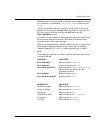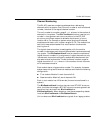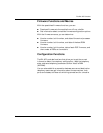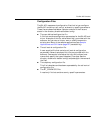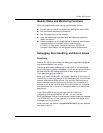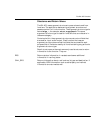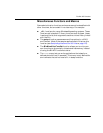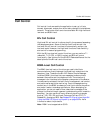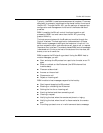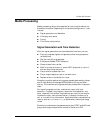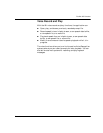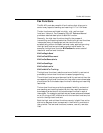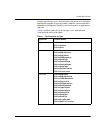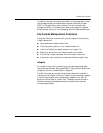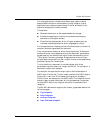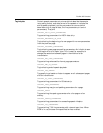
The Bfv API Functions
November 2009 37
Typically, the BSMI is used as one component of a system. Firmware
download, for example, is achieved using the call control functions of
the Bfv API. Through the Bfv API, you can perform all appropriate
configuration and management functions for the Boston series of
products.
BSMI is used by the Bfv call control functions to perform call
processing. BSMI is a level lower than the Bfv API, providing
greater flexibility.
The host communicates with the Brooktrout module through the
Control Interface. The host application (referenced as L4) issues
BSMI control messages to configure the module or to instruct it to
perform a specific action, such as make a call, clear a call, or request
the status of an interface. The module-issued BSMI control messages
(referenced as L3) inform the host of the status of the interface, call
events, or an error condition.
BSMI supports the R2 signaling protocol. Using the BSMI host to
module messages, you can:
Start and stop the R2 protocol on a particular timeslot on an E1
span.
Block or unblock an idle B-channel (the ISDN channel that
handles data).
Place an outbound call.
Answer an inbound call.
Disconnect a call.
Reject an incoming call.
BSMI module to host messages respond to the host by:
Starting and stopping the R2 protocol.
Blocking or unblocking the B-channel.
Seizing the line for an incoming call.
Alerting the host and then connecting a call.
Clearing a request.
Notifying the host when the remote end phone is ringing.
Notifying the host when the call is disconnected at the remote
end.
Providing a protocol error or invalid command status message.



